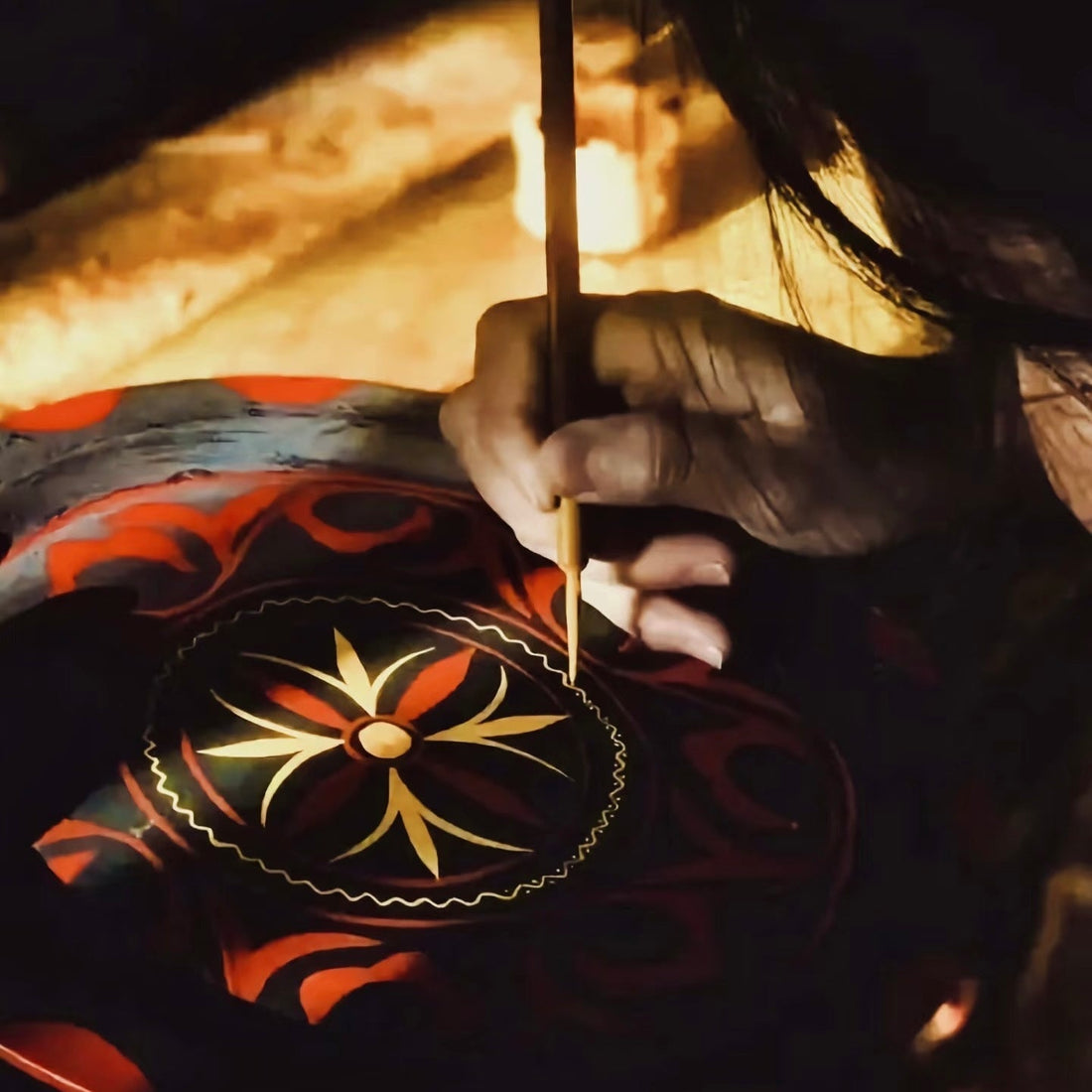
Intangible Cultural Heritage Craft--Da Qi (Lacquerware)
Share
What is Da Qi? Why is the Da Qi craft valuable and considered an intangible cultural heritage craft? In this blog, I'll introduce you to the Chinese heritage craft - Da Qi. It's a time-consuming craft. It takes us almost three months to learn and produce Da Qi jewelry for you. Welcome to know one of our luxury crafts - Da Qi.
Da Qi Jewelry in Ancient Royal Family
Daqi, also known as natural lacquer, is a natural sap tapped from lacquer trees. Its history can be traced back to the Neolithic Age. After thousands of years of inheritance, it has become an ancient and precious intangible cultural heritage craft in China. Daqi features a warm luster and is resistant to decay, wear, and acid, remaining unfaded through the ages. It is widely used, from exquisite lacquerware handicrafts to traditional architectural decorations. Carrying profound cultural connotations, Daqi is the crystallization of the wisdom of the Chinese nation.
The noble class also had a special preference for Daqi jewelry. On some important social occasions, noblewomen would wear Daqi bracelets. The bracelets used the carved - lacquer technique, with auspicious cloud patterns, peony patterns, etc. carved on them, showing their elegant taste. There were also Daqi hairpins, which, with their delicate shapes and unique craftsmanship, became the finishing touch on noblewomen's hair buns. These Daqi jewelry pieces were not only beautiful but also practical. The corrosion - resistance of Daqi allowed the jewelry to be preserved for a long time, making them precious items passed down within the family.
In ancient times, Daqi jewelry was highly favored and widely used among the nobility and the royal family. For the royal family, Daqi jewelry was a symbol of status and rank. During important sacrificial ceremonies, the empress would wear a Daqi phoenix coronet. Usually, it was made with gold wires as the framework, covered with multiple layers of Daqi. The lacquer surface was exquisitely painted with dragon and phoenix patterns symbolizing imperial power and inlaid with various precious stones. The craftsmanship was superb, and it was extremely gorgeous, demonstrating the empress's noble status as the mother of the nation. At palace banquets, princesses would wear Daqi earrings. The shapes were mostly flowers, birds, fish, and insects, using the mother - of - pearl inlay technique. The thin shell slices were inlaid on the Daqi surface. Under the illumination of the lights, the earrings sparkled with colorful lights, complementing the princesses' magnificent dresses.
How To Produce Da Qi Jewelry?
The production process of Daqi craftsmanship is complex and meticulous, filled with the craftsmen's superb skills and patience. Lacquer collection is the first step, and it is a difficult process. Lacquer trees usually grow in mountainous areas. Lacquer collectors need to climb steep mountain roads to find suitable lacquer trees. When tapping the lacquer, specific cuts are made on the trunk of the lacquer tree to let the lacquer liquid slowly flow out. Each time, the amount of lacquer obtained is extremely small, and there are strict restrictions on the number of tapping times for lacquer trees. Over - tapping will lead to the death of the lacquer tree. So, the cost of lacquer collection is high and the efficiency is low. Usually, it takes several days of long - distance travel to obtain a small amount of high - quality lacquer liquid. Let's see one excellent Da Qi producing example from Li Ziqi .
The raw lacquer collected cannot be used directly and needs to go through the lacquer - making process. Lacquer - making masters, relying on their rich experience, filter, stir, and add additives to the raw lacquer to remove impurities and adjust the drying speed, hardness, and color of the lacquer liquid. This process usually takes from several hours to several days. During this period, the master has to observe the state of the lacquer liquid at all times to ensure the quality of the lacquer - making.
Lacquer application is one of the most time - consuming parts of the Daqi craftsmanship. Before applying the lacquer, the body of the object needs to be pre - treated, such as sanding and applying a primer, to make the surface of the body smooth and prepare for the subsequent lacquer application. When applying the lacquer, multiple repetitions are required. Only a very thin layer can be applied each time to ensure an even paint surface. After each application, the lacquer layer must be completely dry, which is greatly affected by the environmental temperature and humidity. Under suitable conditions, it also takes 1 - 2 days to dry. The dried paint surface also needs to be carefully sanded to remove particles and unevenness. Different - mesh sandpapers are used during sanding, from coarse to fine, to achieve the desired smoothness. Repeating the processes of lacquer application, drying, and sanding, which may be carried out several times or even dozens of times, the entire lacquer - application process may last for months to create a paint surface with an appropriate thickness and fine texture.
The Daqi craftsmanship also encompasses numerous unique techniques. For example, carved lacquer involves carving intricate and elaborate patterns on layers of accumulated lacquer, creating a strong three - dimensional effect. Before carving, the design pattern needs to be drawn on the applied lacquer layer, and then special - made tools are used to carve according to the pattern. Since the lacquer layer is relatively soft, the carving must be done with great care. A slight mistake can ruin the whole work. Moreover, different carving techniques are required according to the layers and depths of the pattern, which requires extremely high skills from the craftsmen. A complex carved - lacquer work may take months or even years to complete. Another technique is mother - of - pearl inlay, where thin slices of shell are carefully inlaid on the lacquer surface. Under the refraction of light, it presents a colorful and fascinating visual effect. Before inlaying, suitable shells need to be selected, cut, and sanded into the required shapes and sizes. Then, they are inlaid on the lacquer surface according to the design pattern to ensure that the mother - of - pearl adheres closely to the lacquer surface. After inlaying, lacquer application and sanding are also required to integrate the mother - of - pearl with the lacquer surface. This process also requires a great deal of time and effort.
In addition, the drying conditions for Daqi are extremely demanding. It needs to dry naturally in an environment with a temperature of 25 - 30 degrees Celsius and a relative humidity of 75% - 85%. Such high requirements for the environment not only increase the production difficulty but also further extend the production cycle of Daqi products. Each Daqi product is unique and filled with the efforts and emotions of the craftsmen.
Da Qi Craft in Magic Bonus
In the past three months, our designer started to learn and produce Da Qi jewelry. Since the time cost of the Da Qi technique is almost two to three months, including lacquer preparation, substrate treatment, lacquer application, drying, sanding, decoration, and polishing. And lacquer application took us almost two months to finish, since during the process, we need to paint over and over again. Each Da QI Bead is different, and every batch took us 1-2 months, so the inventory of Da Qi jewelry collection is very limited.



The goal of producing Da Qi jewelry is not only to let you know about Chinese intangible cultural heritage crafts, but also to give you the best design of our store. Energy Jewelry can empower your life and boost your energy. Moreover, it can be elegant, beautiful, and fancy.
Ne Zha
The "Ne Zha" South Red Agate bracelet is crafted from high-quality South Red Agate raw ore, carefully polished into round beads, each one plump and with a uniform color. The bracelet is specially paired with lacquer mother-of-pearl beads, cloisonné lotus metal accessories, and aquamarine. The lacquer mother-of-pearl beads represent the Samadhi Fire that tempered Ne Zha, symbolizing breaking through difficulties and fearing no challenges. The lotus accessories capture the charm of the precious lotus that restored Ne Zha's physical body in the movie. The aquamarine represents the Spirit Pearl, namely Ao Bing, Ne Zha's good partner, and the two of them are invincible when fighting side by side.
Wearing the "Ne Zha" South Red Agate bracelet is like having Ne Zha's courage and strength by your side. When you encounter difficulties in life, it can give you the courage to face them bravely, just like Ne Zha, and pursue your goals with determination. The auspicious meaning of South Red Agate will also bring you good luck and blessings, safeguarding your smooth journey through life. Whether you wear it as your lucky charm or give it as a gift to friends and family to convey strength and blessings, the "Ne Zha" South Red Agate bracelet carries profound cultural connotations and good wishes. May you wear it, inherit Ne Zha's spirit, and embark on a wonderful life full of courage and strength.
Dreamy Azure and Scarlet Necklace

The main bead of the necklace is a 15mm blue mother - of - pearl inlaid lacquer bead. As a Chinese national intangible cultural heritage, the lacquer bead is crafted using traditional mother - of - pearl inlay and lacquer - coating techniques. The raw lacquer is collected from natural lacquer trees, and then applied layer by layer through multiple procedures. After that, thin mother - of - pearl slices are meticulously inlaid, with every step strictly following the traditional craftsmanship. After repeated polishing, the bead reveals a unique luster, fully demonstrating the charm of traditional techniques. The color blue symbolizes tranquility and peace, enabling the wearer to find inner peace amidst the hustle and bustle.
The necklace is paired with small red agate beads. Their bright color symbolizes good luck and prosperity, carrying people's expectations for a better life. The small lapis lazuli beads, with an intermingling of blue and gold, are deep and mysterious. They imply wisdom and good fortune, bringing luck to the wearer.


